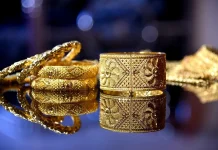But free spending Chinese buyers may not be immediately available to spark a recovery
Waiting for a shopper turn up… Luxury brands will look to take full advantage of pent up demand, but what will be the situation after that?
London: Brian Duffy says he knew it would be a good day even before Watches of Switzerland Group opened the doors to its flagship store on London’s Regent Street for the first time since March.
The shop had arranged for a stream of customers to come pick up Rolex watches they had ordered, said Duffy, CEO of the UK’s biggest seller of luxury timepieces. And then the phone began ringing. “We were inundated with people calling and asking us ‘Are you open?'” he said.
London’s reopening this week gave a fillip to purveyors of luxury goods, from Harrods, the iconic department store, to the tailors on Savile Row. But difficult questions remain over how long the demand will last, and how a global industry promising personalized services will adapt to a pandemic that’s changing the way people interact and travel, possibly forever.
“There is no going back,” said Anita Balchandani, the UK head of apparel, fashion and luxury at McKinsey & Co. Nearly all luxury companies “expect the rules of the game to profoundly change.”
Will the Chinese return?
One crucial variable is China, whose consumers accounted for just over a third of all luxury spending last year. Firms from Gucci-owner Kering SA to LVMH SA, which has the Louis Vuitton and Dior brands, reported a rebound in sales on the mainland in April, after lockdowns ended.
Yet a weakened economy could damage consumer confidence, and the decision this week to close Beijing’s schools and cancel flights to quell a fresh outbreak of COVID-19 reveals how fragile any recovery might be.
The cratering in intercontinental air travel also means far fewer big-spending consumers from China and elsewhere will be jetting to European tourist destinations, at least until a vaccine or cure is found. As a result, “fashion centers like London, Paris and Milan will suffer disproportionately,” predicted Paul Martin, the UK head of retail at KPMG.
After a high
Global sales of personal luxury goods reached a record high of 281 billion euros ($315 billion) last year, according to Bain & Co. Now, after months of restrictions that shuttered shops and factories, the consulting firm estimates sales could fall as much as 35 per cent this year.
Johann Rupert, chairman of luxury giant Cie. Financiere Richemont SA, owner of the Cartier brand, warned last month that the “grave economic consequences” of the pandemic could last three years. Swiss watchmakers, in particular, are facing the worst year in the modern history of the industry.
A “behavioral shift” to online shopping will accelerate as people remain reluctant to visit stores, predicts Jose Neves, CEO of Farfetch Ltd., which sells a range of luxury brands over the internet. Online purchases accounted for about 12 per cent of global luxury sales in 2019, and could more than double to 30 per cent by 2025, according to Bain.
“The big exam question for luxury brands,” said Martin, “is how to do online in a way that still feels like a luxury experience and not transactional.”Straggling back, and it could take a long while before global luxury retail hotspots make a full return.Image Credit: Agency
Take years to perfect
Even as they build up their online presence, retailers will need to continue catering to customers in stores while keeping shoppers and staff safe. Plexiglass screens at cashiers, mask wearing and lining up to enter aren’t the experiences a high-spending consumer might typically expect. Richemont said last month it was focused on a journey towards “new retail”, a seamless online-offline experience, but predicted it could take several years to perfect.
Helen Brocklebank, the CEO of Walpole, a group that represents the luxury segment in Britain, said that while the acceleration of online shopping is certain post-COVID-19, the importance of fashion capitals, such as London, won’t diminish. Growth in the UK has been driven by domestic demand as well as international tourism, she said, describing the reopening of stores in England on Monday as a “real confidence boost”.
“Luxury brands have been like swans on a lake looking calm,” she said. “But underneath there has been a lot of hard paddling going on.”
Always need for a perfect fit
The challenge to provide top-drawer service without contravening social distancing rules is easier for some than others. Richard Anderson – who started his eponymous tailoring business on Savile Row almost two decades ago – has been working on the London street famous for providing bespoke suits and jackets since 1982.
In this age of Covid, he’s had to entirely rework how he carries out fittings. To avoid coming too close to clients, the customers must now button or pin their own suits, while a socially distant Anderson takes notes and photographs instead of marking the fabric with chalk.
“It’s not ideal, but it is certainly not a car crash,” said Anderson. “I can tell if the sleeves are hanging correctly, or if I need to pin the side-seam from two meters away.”Savile Row tailors hope demand for their bespoke services will remain timeless.




